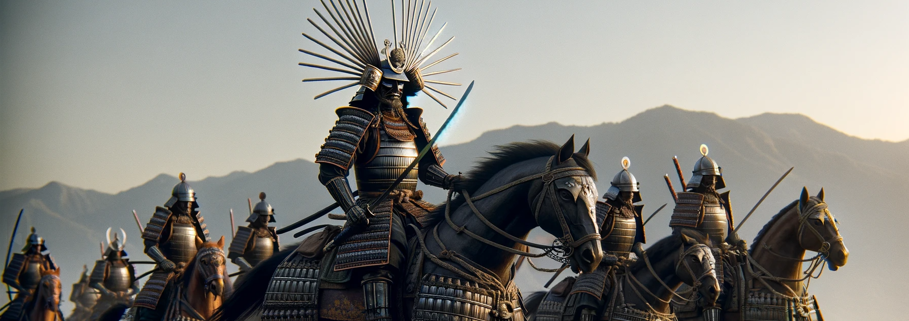Makan Pantheon
Monotheistic
Lead Deity: Sejinojo The Grey Lion
State Religion of: Makan Empire, Mizunaga, Jianc, Karakai, Karawa, Yoshi, Tomiz Guo, Dilhua Guo
Ametakio: Goddess of the seas and storms, often vengeful
Nara: Goddess of focus, driver of intense fervor
Narawa: Goddess of the grace of nature, sister of Nara
Soribu: God of judgement
Tejin: God of the grace of wind, might, and the natural flow of life
Torimok: God of the mountains, watcher of all
Daijo - Ministers of districts or Monasteries
Desho - Head of a cohort of disciples
Saishi - Equivalent to Lieutenant or priest, they serve the Desho. In military are a company captain
Gorowa - An elder disciple
Senmenjo - Baseline follower/disciple
Lead Deity: Sejinojo The Grey Lion
State Religion of: Makan Empire, Mizunaga, Jianc, Karakai, Karawa, Yoshi, Tomiz Guo, Dilhua Guo
Notable Gods
Sejinojo "The Grey Lion": Head deity, god of war and strategyAmetakio: Goddess of the seas and storms, often vengeful
Nara: Goddess of focus, driver of intense fervor
Narawa: Goddess of the grace of nature, sister of Nara
Soribu: God of judgement
Tejin: God of the grace of wind, might, and the natural flow of life
Torimok: God of the mountains, watcher of all
Beliefs and Mythology
The Mako people believe themselves the chosen ones of Sejinojo, a mighty prophetic lion who roams the grasslands and fields where humans are not. The power of the Grey Lion is so strong no living creature can withstand the sight of him, lest they drop dead on the spot. He is believed to help the Makan people solely in their destiny to conquer all of Kronis. There are other beings too, which help the Grey Lion and so help the Makans in a variety of ways. The beliefs in each different god is perpetuated by monasteries serving at the sites held sacred for each being. The Makans claim that these gods have each visited these monasteries at some point, and some do so rather frequently (i.e. every few centuries). Notably there is no monastery for Sejinojo. The Makan Empire has several dedicated "holy cities" where the clergy dwells and the architecture, in stunning display, showcases the gods. There are also beings who actively work against the Grey Lion's goals. Creatures of myth including sphinx, sea serpents, and spirits pervade Makan myth as forces who actively antagonize people. No loyal follower of the Makan Pantheon travels without being prepared to answer the following questions from a random sphinx: 1. What has 4 letters, sometimes has 9, and never has 5 letters? 2. How far can you run into the woods? 3. I create my lair with earthen string, and dispatch my prey with a biting sting. 4. Some try to hide, some try to cheat; but time will show, we always will meet. Try as you might to guess my name. 5. What can run, but never walks; has a mouth, but never talks; has a head, but never weeps; has a bed, but never sleeps?Founding
Shrouded in mystery like all Pantheons, the true origins of the Makan Pantheon are unknown. However, in legend it is said that Sejinojo either created the Makan people or anointed them upon their arrival to the Island of Tongiu. Around 1000 BR the Makan people united into clans and city-states. The oldest iconography from this religion dates all the way back to 800 BR.History
The Makan Pantheon follows the Makan people for much of their history, from their oppression under the Seikans in the early centuries BR to their rise to power in the 200s - 500s AR. Makan monks often served in the military in a multitude of ways - from light shock infantry to spies. Monasteries served as learning institutions for the common civilian as well as occasional outposts and supply depots in times of war. The arrival of the Steerians and their own Pantheon in the ancient days thoroughly perplexed followers of Makan. Steerian aptitude in war challenged Makan perceptions of being the chosen people. It did not help that the most notable Steerian victories were against Makan armies with sacred relics typically used to boost their fervor. The Makan Pantheon thrived on Tongiu and in parts of the Hersinos Subcontinent until the Makan Empire collapsed in the 800s AR. Revolutions and rebellions gripped the continents, leading to mass burnings of associated monasteries and iconography. Secretive guilds, which were once a staple of the Makan Empire, were turned against Makan institutions. Some became dedicated to the destruction of the Makan pantheon and all remnants of the Empire, hunting down monks who still carried on the traditions of the ancient Makan Pantheon. By 890 AR, the last holdouts of the Makan Empire were gone, and few monasteries remained standing. Warring states slowly adopted new traditions, in a break from the Makan Pantheon, leading to a slow decline of the religion as a whole.Enforcement
At first, common religious views preached for active oppression of non-believers. However the Mako soon ran into the difficulty of people not wanting to believe they were inferior to another culture. Subsequently the Pantheon's tenants incurred many, many rebellions throughout the Makan Empire. It was not until the 400s AR when, after many religiously driven civil wars and rebellions, that the Makan Imperial government began to work with the clergy and declared a more tolerant approach. The new policies led to less rebellions, but also less growth of the Pantheon beyond Tongiu. Therefore, the primary followers of the Makan Pantheon now remain the Makans, the Kodrans - who are believed to the be the second chosen - and the Seikans.Hierarchy of Clergy:
Eraba - The head figure, often presiding over a holy city or a group of MonasteriesDaijo - Ministers of districts or Monasteries
Desho - Head of a cohort of disciples
Saishi - Equivalent to Lieutenant or priest, they serve the Desho. In military are a company captain
Gorowa - An elder disciple
Senmenjo - Baseline follower/disciple

Type
Religious, Pantheon



Comments